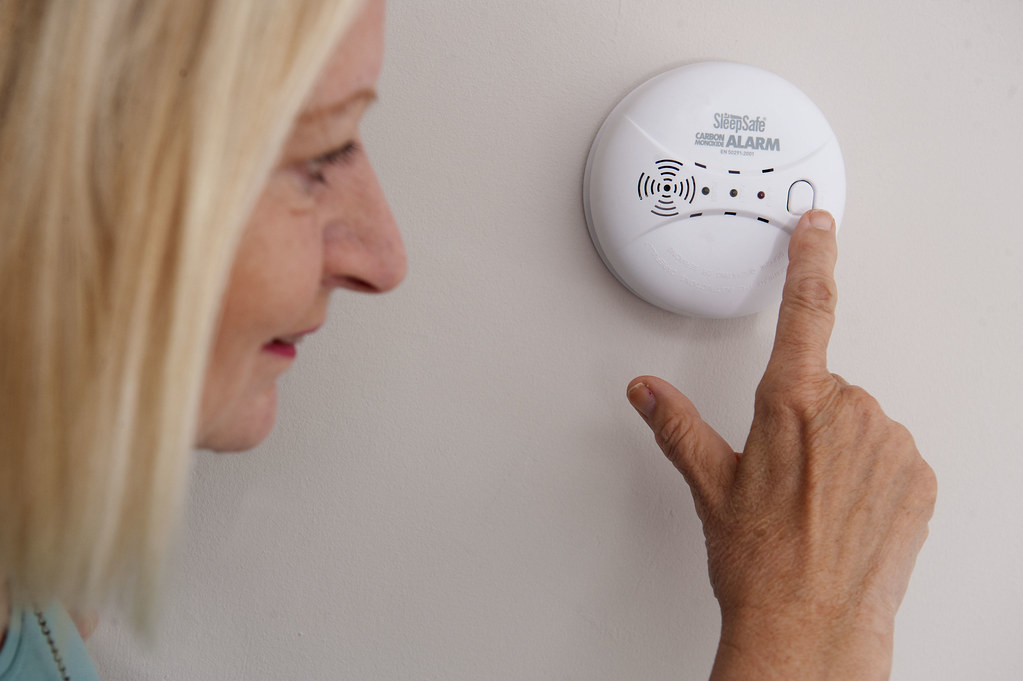Home is where the heart is, and ensuring the safety and well-being of your loved ones within those walls is a top priority. While many homeowners are vigilant about smoke detectors and security systems, one often overlooked threat to your family’s health is carbon dioxide (CO2). In this article, we’ll explore the importance of protecting your home and loved ones with a carbon dioxide detector.
Understanding the Silent Threat: Carbon Dioxide
Carbon dioxide is a colorless, odorless gas that is naturally present in the atmosphere. It’s also a gas that we exhale with each breath. While it is not inherently harmful at typical outdoor concentrations, the dynamics change when CO2 levels rise indoors. The increased concentration of CO2 can pose health risks and even become life-threatening if left unchecked.
The Sources of Indoor Carbon Dioxide
Understanding the sources of indoor CO2 is crucial in addressing the issue. Several common factors can contribute to elevated CO2 levels in your home:
1. Human Respiration
Every time you and your family members breathe, you release CO2 into the air. In a confined space with inadequate ventilation, CO2 levels can rise significantly.
2. Poor Ventilation
Inadequate ventilation systems can trap CO2 indoors, allowing it to accumulate over time. This is especially true in tightly sealed homes or during the winter months when windows and doors are kept closed.
3. Combustion Appliances
Gas stoves, fireplaces, and furnaces are potential sources of CO2 if they are not properly maintained or if there are leaks in the system.
4. Indoor Plants
Although plants absorb CO2 during photosynthesis, they can also release small amounts of CO2 at night when photosynthesis stops.
Health Risks Associated with High CO2 Levels
Exposure to high levels of carbon dioxide can lead to a range of health problems for you and your loved ones:
1. Headaches
Elevated CO2 levels can cause headaches and migraines, leading to discomfort and reduced quality of life.
2. Fatigue
Feeling constantly tired and lacking energy is a common symptom of prolonged exposure to high CO2 concentrations.
3. Shortness of Breath
Difficulty in breathing or shortness of breath can occur, especially in individuals with pre-existing respiratory conditions.
4. Impaired Cognitive Function
High CO2 levels can impair cognitive function, affecting decision-making, problem-solving, and overall mental acuity.
5. Nausea and Dizziness
Experiencing nausea, dizziness, and a feeling of lightheadedness can be signs of elevated CO2 exposure.
6. Loss of Concentration
Reduced focus and concentration are common effects of breathing in air with high CO2 content.
The Importance of Carbon Dioxide Detectors
To protect your home and loved ones from the dangers of elevated CO2 levels, it’s crucial to install CO2 meter in key areas of your house. These devices are designed to monitor and alert you when CO2 concentrations reach unsafe levels.
1. Early Warning
Carbon dioxide detectors provide an early warning system, alerting you to potential dangers before CO2 levels become harmful.
2. Peace of Mind
Knowing that you have a reliable device in place to monitor CO2 levels allows you to enjoy peace of mind, especially when it comes to the health of your family.
3. Integration with Smart Homes
Many modern CO2 detectors can be integrated into smart home systems, providing remote monitoring and control through your smartphone or other connected devices.
4. Compliance with Building Codes
In some areas, the installation of carbon dioxide detectors is required by building codes and regulations to ensure the safety of occupants.
Where to Install Carbon Dioxide Detectors
To effectively protect your home and loved ones, it’s essential to strategically place carbon dioxide detectors in key areas:
1. Bedrooms
Installing a CO2 detector in the bedrooms ensures that you receive immediate alerts if CO2 levels rise while you and your family sleep.
2. Living Areas
Common living spaces like the living room and family room should also have CO2 detectors to monitor the air quality where you spend the most time.
3. Kitchen
Given the potential for gas stoves to produce CO2, installing a detector in the kitchen is a wise choice to prevent CO2 buildup during cooking.
4. Basement
Basements can often have poor ventilation, making them susceptible to elevated CO2 levels. Installing a CO2 detector here is essential.
5. Utility Rooms
If you have combustion appliances like a furnace or water heater, placing a CO2 detector in the utility room is critical to monitor for any leaks or malfunctions.
Tips for Effective Use of Carbon Dioxide Detectors
To maximize the effectiveness of your carbon dioxide detectors, consider the following tips:
1. Regular Testing
Perform routine testing of your CO2 detectors to ensure they are functioning correctly. Many detectors have a test button for this purpose.
2. Battery Maintenance
Replace the batteries in your CO2 detectors as recommended by the manufacturer to ensure uninterrupted operation.
3. Understand Alarm Types
Familiarize yourself with the different types of alarms, including low-level alerts and high-level alarms. Know how to respond appropriately to each.
4. Invest in Quality Detectors
Choose reputable brands and models that adhere to safety standards to ensure the reliability of your CO2 detectors.
Conclusion
Protecting your home and loved ones is a fundamental responsibility, and safeguarding them from the silent threat of carbon dioxide is equally important. Elevated CO2 levels can have detrimental effects on health, leading to discomfort, fatigue, and even impaired cognitive function. By installing carbon dioxide detectors in strategic locations throughout your home, you can ensure that you receive early warnings of dangerous CO2 levels. Don’t compromise on the safety and well-being of your family—make the wise choice to invest in carbon dioxide detectors and enjoy peace of mind knowing that your home is a safe and healthy environment for your loved ones.

